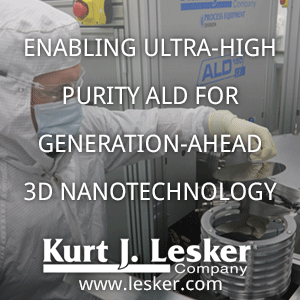According to a recent article in Semiconductor Engineering on the reworking of established nodes (May 24th, 2017 -
By: Ed Sperling, LINK) the benefits of device scaling don’t apply equally to all markets. However, the process technology does. A good example of this is, according to my opinion, is ALD high-k (Al2O2, ZrO2, HfO2, Ta2O5 etc.) MIM Caps that have multiple HVM applications in 200mm fabs around the world. As well as ALD liners and etch stops in MEMS and LED production.
According to Ed Sperling, that " .. is why the foundries, equipment makers and
packaging houses have introduced a menu of possible options at
established nodes, including new materials as well as new process
options, including low-power, ultra-low power, high-performance and
low-cost options at the same nodes."
Interestingly this also applies to ALD for high volume manufacturing and in an interview with ASM Peter Zagvijn, senior technical product manager a message was given:
“By using thin films on 200mm you can get higher function but still have
low cost. This is a technology enabler. It will be important for high-voltage
electronics and electric cars because it allows you to extend the
platform maintainability and the lifetime of the equipment by
transferring what happens at the leading edge to the lagging edge. Using
ALD technology, there are more than 50 films available for diffusion on one platform.”
In addition, Zagvijn said that ALD technology and capability will be important in wafer-level packaging.



%20(1).png)
No comments:
Post a Comment